Tips on how to Manage the Cash Flow of my Business

Many small business owners find themselves in a situation where they are trying to make a profit while still paying the bills. It is a tricky balancing act because every business owner knows that if they don't make enough money, they will have to cut back on their expenses, and that means cutting back on the quality of their product or service. If you want to keep your business running smoothly, you need to plan to manage your cash flow.
One of the most important things you will deal with is cash flow. This article is designed to assist you with some effective methods to deal with this problem.
What Is Cash Flow Management?
Cash flow management is allocating the money received from customers toward meeting the company's obligations.
It is the process of taking care of your business's financial obligations. When you're running a business, you will likely have to spend money to cover the costs of various expenses. The money that you receive from customers is intended to cover these expenses. However, sometimes it is possible to run out of money before paying all your costs.
Why Do You Need A Cash Management Plan?
Here are several reasons you'll want to have a cash management plan. Firstly, you'll see how much money you're spending and how much you're making. You'll also see how much you're borrowing and how much you're paying back. It will help you to understand where your money is going and how you can make it further.
How To Manage The Cash Flow Of Business?
To prevent this, you need to effectively manage your business's cash flow.
Step 1: Establish a business budget
Before you start, you have to establish a business budget. It is the amount of money that you will need to spend every month. Your budget should reflect all the costs you expect to incur during the next month. You should also keep in mind that some of these costs might be variable. For example, some of your expenses could depend on the season.
It is recommended that you establish a budget by first estimating the cost of running your business each month. You can also adjust your monthly budget if you think that your estimate was incorrect. It is good to review your budget at the beginning of each month.
Step 2: Pay bills on time
Once you have created your budget, you need to pay all of your bills on time. It is widespread for people to delay paying their bills. It is because they may assume that their business will generate more revenue in the future.
Step 3: Pay yourself first
When you run a business, you will need to invest a large amount of your own money into the operation. It will include hiring employees, paying for marketing materials, and many other business expenses. While these expenses are necessary, it is still important to prioritize them. You should ensure that you pay yourself first. If you fail to do this, you could end up losing money.
If you are running a business, you will need to keep an eye on your cash flow. As soon as you begin, you will face a lot of challenges. If you are not careful, you could end up losing a large amount of money before you even have a chance to gain anything.
To avoid this, you should make sure that you can afford your business. If you cannot, you need to take action as soon as possible. If you are starting a new business, it is good to start off with a small amount of money. You can expand your budget as your business grows.
Step 4: Track your expenses
When you start your business, you will want to track your expenses. It will allow you to see where your money is spent. You should keep a record of all of your costs. You should also consider setting up a separate account for your business expenses. It will allow you to keep track of your business's finances separately.
Step 5: Create a budget plan
Once you have tracked your expenses, you need to create a budget plan. It will allow you to set goals for your business. You should also make a budget that includes a contingency plan. It will help you to identify any potential problems before they occur.
You should try to stay within your budget. If you find that you are spending more money than you expected, you should take action as soon as possible. If you do not, you could end up losing money.
Step 6: Keep your expenses down
You should try to keep your expenses down. You should try to cut back on unnecessary costs. It will help you to save money. You should also try to cut out unnecessary expenses. It will allow you to focus on what is most important.
Step 7: Save money
If you are not saving money, you will not be able to grow your business. When you run a business, you will need to invest a large amount of money. It will include buying supplies, paying employees, and many other business expenses. If you do not save money, you could lose a large amount of money before you even have a chance to gain anything.
Step 8: Hire employees
When you start a business, you will need to hire employees. If you cannot do this, you will not be able to grow your business. Hiring employees is one of the most significant expenses that you will face when you start a business. You will need to pay for their wages, benefits, and many other things.
If you hire employees, you will need to provide them with a benefits package. It will allow you to protect them and give them something to fall back on. If you do not provide them with this, you could lose money.
Step 9: Develop a marketing strategy
When you start a business, you will need to develop a marketing strategy. It will help you to attract customers and increase sales. You should try to market your business in a unique way. It will allow you to stand out from the competition.
You should try to use various methods to market your business. You should focus on social media, television, radio, and other forms of advertising.
Step 10: Make sure your business is profitable.
When you start a business, you will want to make sure that it is profitable. If you are not beneficial, you will not be able to grow your business.
You should try to find ways to reduce your costs. It will help you to make your business more profitable. You should also try to make sure that your business is good.
The Importance Of A Good Cash Management Plan
A cash management plan is a document that provides you with a clear vision of how you'll manage your cash. It helps you to make decisions about your money.
It helps you be more organized: A sound cash management plan will help you organize your finances and make it easier to keep track of your money.
It helps you make intelligent decisions: You can use a cash management plan to make sure you're spending your money wisely. It's a great way to avoid debt.
It's an excellent tool for your business: A cash management plan is great for your business. It's a great way to help you manage your cash and make sure that you're making the right decisions.
It helps you save: A cash management plan can help you save money, and it can also help you invest your money.
It can assist you in managing your cash flow: A sound cash management plan can help you manage your cash flow, and it can help you avoid borrowing money.
Tips For Managing Your Cash Flow.
Here are a few tips that will help you manage your cash flow.
The first and foremost thing you should do is determine your goals. What is your business goal? You must have the answer to this question. Once you know what you are trying to achieve, you can work on it. You cannot expect to achieve something unless you first understand what you want.
Secondly, you must figure out your cost of capital. In a small business, the cost of capital is usually lower than in large companies. Therefore, if you want to succeed in your small business, you must first invest your money wisely.
Thirdly, you need to have a good relationship with your banker. You should never try to pay back your loans on time. Instead, you need to pay them off gradually. It will help you avoid paying interest rates.
Fourthly, you need to have a sound accounting system. You need to understand how your accounts work. Make sure that you use an accounting system that you can use for both your business and personal accounts.
Fifthly, you need to get some advice. Do not just work on your business by yourself. Get some professional help. They can give your ideas on how to increase your sales.
Sixthly, you need to set up an automated payment system. It is essential to have a sound automation system. An automation system helps you receive payments from clients automatically. You must also have a plan to help you manage your clients' accounts.
Finally, you need to have a good relationship with your clients. If you have a terrible relationship with your clients, they will be hesitant to work with you.
These tips may seem simple, but they will make a difference in managing your business.
Types Of Cash Management Plans
There are many different cash management plans, but most people use one of three basic ones.
The first type of cash management plan is a budget. A budget is a plan that includes how much you want to spend each month on various products. You could use a budget to save money and prevent you from buying more than you need.
The second type of cash management plan is an envelope system. An envelope system is a system that helps you pay your bills and expenses on time. It's based on the idea that you should only spend what you have available in your bank account at the moment. This way, you won't be tempted to buy things you don't need.
The third type of cash management plan is an emergency fund. An emergency fund is like a savings account where you set aside money if something happens that causes you to be without a job or income for a few weeks or months. An emergency fund will help you avoid bankruptcy.
It's essential to have a good cash management plan. If you don't have a plan, you'll spend your money on things you don't need or want. You'll also be wasting your money on things you don't need or want.
Use Technology To Make And Accept Payments.
Payments are becoming more critical than ever as the online world grows.
As of late, there has been a push by many e-commerce websites to move away from traditional forms of payment (credit cards, debit cards, etc.) and toward newer technologies such as Bitcoin, Apple Pay, and Google Wallet.
However, in order to make and accept these payments, there needs to be an infrastructure setup.
So, what do you need to know about payments?
The first thing you need to do is to decide whether you're going to use an external service like PayPal or Google Wallet to process payments or build it into your website.
It is possible to process payments independently, but extensive technical knowledge will be required. You will need to set up a server and manage the payment processing yourself.
External services are excellent because they provide an interface for your users. However, they charge fees, requiring additional information to be filled out.
Here are some ways that you can incorporate payment methods into your website:
PayPal (free)
PayPal is probably the easiest way to accept payments on your site. Go to paypal.com and click the Get Started button to start using PayPal. Then you can create your account.
It is a free method of payment that you can use for your purchases. It's also one of the most well-known methods of payment.
Apple Pay (free)
Apple Pay is a payment option that is built directly into Apple devices. It allows you to pay for things just like you would at the grocery store or coffee shop.
You need to link your iTunes account to your Apple device to get started. Once that is done, you will need to set up your Apple device with your credit card information.
The last step is to sign in to the Apple website using your email address and password. From there you can start shopping.
Google Wallet (free)
Google Wallet is another service that you can use to accept payments on your website. To get started, head over to google.com/wallet and create an account.
Then, you will need to add your credit card information to your account. Next, you will need to authorize your account to allow Google to send you money.
Once you have added your card, you can start shopping with the Google Wallet app on your phone.
PayPal and Google Wallet both offer great convenience for customers, and they also work with many different types of cards. However, they don't integrate well with other payment services like Stripe or Square.
Stripe (free)
Stripe is a payment processor that can be integrated into your website. It means that you can easily accept payments from your customers.
Conclusion
The most method you can do to manage the cash flow of your business is to set a budget. You should budget your money so that you can manage it effectively. It will give you the freedom to spend wisely and save money for future expenses.
Do you feel like you are struggling with putting "strategy" and "business growth concepts" in place that make a difference? Doing it all is overwhelming! Let’s have an honest discussion about your business and see if the Power of 10 can help you. Click “HERE” to have a great conversation with our team today.
Written and Published By The Strategic Advisor Board Team
C. 2017-2021 Strategic Advisor Board / M&C All Rights Reserved
www.strategicadvisorboard.com / info@strategicadvisorboard.com











